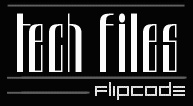 I discovered that the #1 hit for my name on Google is Flipcode. Excellent! I've been slacking off with the updates, but I'll try to post more often, if only to keep my name high on the Flipcode front page ;-) Siding With Evil  Things are progressing. There's little steam jets coming out of my ears from over-ingestion of physics equations, but the worst is over (I hope?) I'll probably have to dive into quaternions at some point. I have yet to find a completely painless treatment of the subject, but I'm still looking. One of my future concerns is deciding on technologies. I am saddened to say that I am siding with Direct3D at this point. The reasoning is that this game will be a niche product, so wanting to target Windows-only is not a crime (perhaps it should be, but it's not). Another reason is that I want to support those poor neanderthals who haven't got a 3D accelerator yet. I was thinking of (gulp) using retained mode for the models, because I have meager 3D needs. I could farm out the modelling task to lots of folks who use various software packages, and use PolyTrans to convert them all into .X files. The trouble is that Microsoft, always the pillar of stability, has deprecated retained-mode in DX7, and card manufacturers are already letting those functions entropy in their drivers. I love OpenGL to death, but lack of efficient software rendering seem to make it cost-ineffective. If anyone can pull me out of the M$ abyss, please mail me. I really would like to get away with not writing Yet Another Model File Reader, or Yet Another Software Renderer for this game. Random Thought-Of-The-Day  Back in the days of DOOM, I thought it would be really cool to have a game where the brightness of the screen adjusts slowly as you move from light to dark, like your eyes do in real life. Pardon my ignorance of FPS's, but have any games implemented this?  
|

